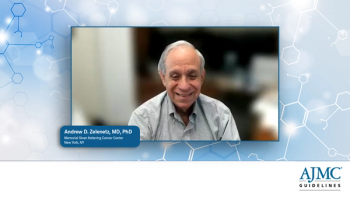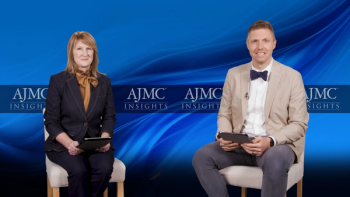
Emerging Therapies Transforming IPF and PPF Treatment Landscapes
Panelists discuss several promising new agents for idiopathic pulmonary fibrosis (IPF) and progressive pulmonary fibrosis (PPF), including an LPA1 receptor antagonist showing lung function preservation, integrin inhibitors targeting fibrotic pathways despite safety challenges, and inhaled prostaglandins being evaluated as a well-tolerated add-on therapy in ongoing trials.
Episodes in this series

Several promising agents are currently in development for treating IPF and PPF, focusing on novel mechanisms beyond existing therapies. One such agent is an LPA1 receptor antagonist, which targets lysophosphatidic acid signaling, a pathway implicated in fibrosis progression. In a well-designed phase 2 trial, this oral drug demonstrated preservation of lung function over 26 weeks, with treated patients showing approximately 1.4% to 3.2% less decline in forced vital capacity compared with placebo, depending on the disease subtype. The drug was generally well tolerated, with mostly mild gastrointestinal adverse effects such as diarrhea. Encouragingly, this agent has advanced into phase 3 studies, and results from larger, multicenter trials are eagerly awaited to confirm its efficacy and safety profile.
Another innovative approach involves targeting epithelial injury, a key early event in lung fibrosis, through inhibition of integrins αvβ6 and αvβ1. These integrins activate transforming growth factor-β (TGF-β), a major driver of fibrotic tissue remodeling. A selective oral inhibitor was studied in patients with IPF, showing initial improvements in lung function and good tolerability. However, the trial was unfortunately halted due to an imbalance in adverse events between treatment and placebo groups, underscoring the challenges of balancing efficacy with safety in this patient population. Despite this setback, ongoing research continues to explore integrin inhibition across fibrotic diseases, including liver and kidney fibrosis, as part of a broader effort to improve outcomes.
A third agent in development uses inhaled prostaglandins, originally used for pulmonary arterial hypertension, to treat PPF. Inhaled prostaglandins appear to improve lung function in patients with interstitial lung disease, although the precise mechanism remains unclear. This therapy is being evaluated as an add-on to standard treatments in a large phase 3 trial enrolling diverse patient populations, including those with autoimmune-related fibrosis. Because inhaled doses are much lower than systemic treatments, the drug is expected to have fewer adverse effects such as flushing or gastrointestinal discomfort. If successful, this approach could expand combination therapy options and provide meaningful benefits for patients with progressive fibrosis.
Newsletter
Stay ahead of policy, cost, and value—subscribe to AJMC for expert insights at the intersection of clinical care and health economics.












































